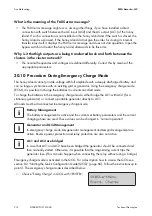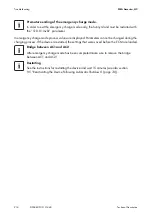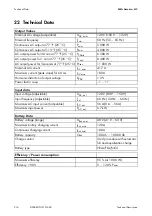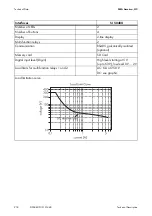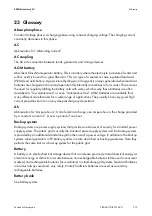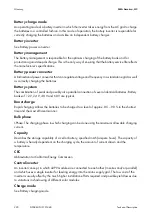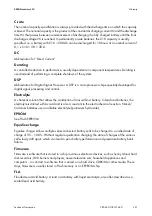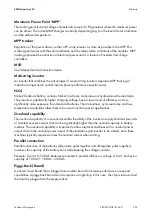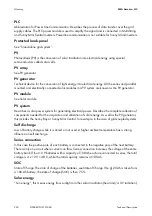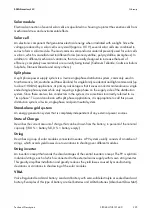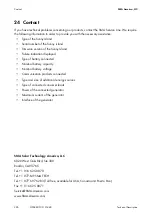
SMA America, LLC
Glossary
Technical Description
SI5048U-TUS121440
223
Maximum Power Point ”MPP”
The working point (current/voltage characteristic curve) of a PV generator where the maximum power
can be drawn. The actual MMP changes constantly depending (e.g.) on the level of solar irradiation
and the ambient temperature.
MPP tracker
Regulation of the power drawn so that a PV array remains as close as possible to the MPP. This
working point varies with the solar irradiation and the temperature conditions of the modules. MPP
tracking optimizes the extraction of electrical power and is a feature of inverters and charge
controllers.
MSD
See Independent disconnection device.
Multi-string inverter
An inverter that combines the advantages of several string inverters (separate MPP tracking of
individual strings) and a central inverter (lower performance specific costs).
NiCd
Nickel/Cadmium battery, contains Nickel, Cadmium, and potassium hydroxide as the electrolyte.
They require a significantly higher charging voltage, have a lower level of efficiency and are
significantly more expensive than lead acid batteries. Their robustness, cycle resistance and low-
temperature capabilities allow them to be used in certain special applications.
Overload capability
The overload capability of an inverter describes the ability of the inverter to supply shortterm (seconds
or minutes) excessive loads, that can be significantly higher than the nominal capacity in battery
inverters. The overload capability is important to allow electrical machines with a nominal power
output close to the nominal power output of the standalone grid inverter to be started, since these
machines typically require six times the nominal current when starting.
Parallel connection
Parallel connection of the batteries (all positive poles together and all negative poles together)
increases the capacity of the battery bank while keeping the voltage constant.
Example: Two 24 V/100 Ah batteries connected in parallel still have a voltage of 24 V, but have a
capacity of 100 Ah + 100 Ah = 200 Ah.
Piggy-Back (Board)
A printed circuit board that is plugged into another board to increase performance or expand
capabilities. A piggy-back board can also replace a single chip. In this case, the chip is removed and
the board is plugged into the empty socket.




